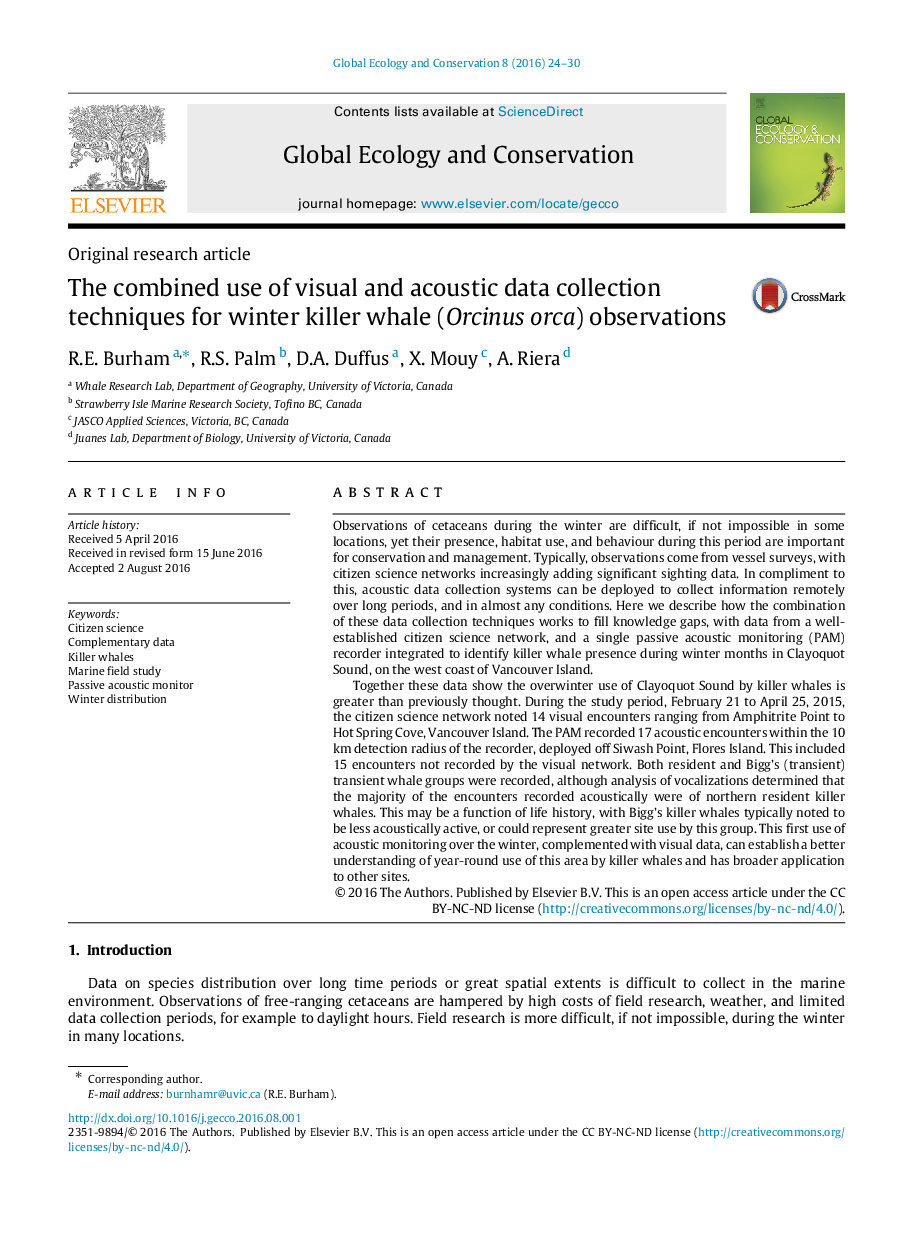| کد مقاله | کد نشریه | سال انتشار | مقاله انگلیسی | نسخه تمام متن |
|---|---|---|---|---|
| 4379429 | 1617659 | 2016 | 7 صفحه PDF | دانلود رایگان |
Observations of cetaceans during the winter are difficult, if not impossible in some locations, yet their presence, habitat use, and behaviour during this period are important for conservation and management. Typically, observations come from vessel surveys, with citizen science networks increasingly adding significant sighting data. In compliment to this, acoustic data collection systems can be deployed to collect information remotely over long periods, and in almost any conditions. Here we describe how the combination of these data collection techniques works to fill knowledge gaps, with data from a well-established citizen science network, and a single passive acoustic monitoring (PAM) recorder integrated to identify killer whale presence during winter months in Clayoquot Sound, on the west coast of Vancouver Island.Together these data show the overwinter use of Clayoquot Sound by killer whales is greater than previously thought. During the study period, February 21 to April 25, 2015, the citizen science network noted 14 visual encounters ranging from Amphitrite Point to Hot Spring Cove, Vancouver Island. The PAM recorded 17 acoustic encounters within the 10 km detection radius of the recorder, deployed off Siwash Point, Flores Island. This included 15 encounters not recorded by the visual network. Both resident and Bigg’s (transient) transient whale groups were recorded, although analysis of vocalizations determined that the majority of the encounters recorded acoustically were of northern resident killer whales. This may be a function of life history, with Bigg’s killer whales typically noted to be less acoustically active, or could represent greater site use by this group. This first use of acoustic monitoring over the winter, complemented with visual data, can establish a better understanding of year-round use of this area by killer whales and has broader application to other sites.
Journal: Global Ecology and Conservation - Volume 8, October 2016, Pages 24–30
